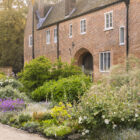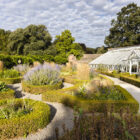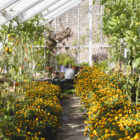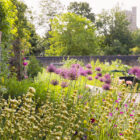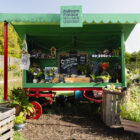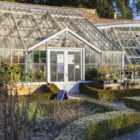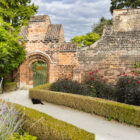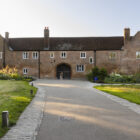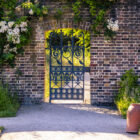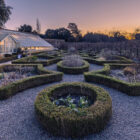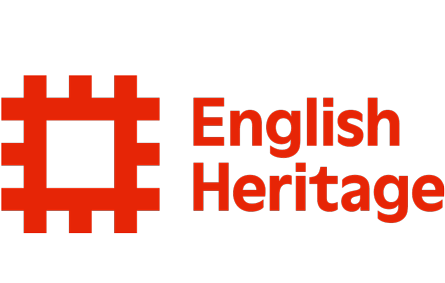Fulham Palace House and Garden
Location: Fulham, London
Fulham Palace is a historic house and garden, formerly the home of the Bishop of London, and now managed by Fulham Palace Trust. There have been three major restoration projects carried out on the house and garden since 2006 and is now entering into the fourth and final phase including the creation of new garden spaces.
Fulham Palace is one of the earliest botanic gardens in the UK. In the early 1500s Bishop Grindal introduced species of plants from his travels in Europe. Bishop Compton, resident at the Palace in the late 17th century, was amongst the first people to sponsor plant hunters to travel to the Americas and send back plants. As part of the phase III restoration project (2017-19) many of Bishop Compton’s botanical introductions have been replanted. Today the gardens are an 18th century landscape design and layout, including a walled garden, created by Bishop Terrick.
The garden is 13 acres including a 2.5 acre walled garden which includes a parterre, orchard, vegetable beds and wall and arch trained fruit. There is a glasshouse vinery which is used for propagating and containerising stock, plant displays and growing glasshouse crops. Organic growing techniques are used to grow all crops which are harvested and sold to the public.
There is a planted-up Tudor courtyard and a main drive with borders including a drought themed border. There is a woodland area and numerous long grass areas that are being managed to increase biodiversity. The gardens’ historic plant collection was awarded National Historic Plant Collection status by Plant Heritage in March 2024. The collection includes a selection of trees, shrubs, bulbs and herbaceous plants that were grown at Fulham Palace by Bishop Compton between 1675 and 1713. Fulham Palace is committed to researching the full story to acknowledge all those involved with Compton’s plant collection including those from indigenous tribes and enslaved people.
Fulham Palace provides a wide range of horticultural opportunities that a trainee will be involved in. These seasonal tasks include propagation, vegetable growing, pruning, grassland maintenance, tree care, landscaping, composting, mulching, planting, turf management and organic pest management. The trainee will also be fully trained on all machinery and equipment.
Placements available: One
Staff numbers: 6 full time horticulturists including head gardener, 2 senior gardeners, 1 gardener, 1 garden apprentice (18 month contract) and 1 HBGTP (12 month contract) trainee plus part-time garden trainees, plus 70 garden volunteers.
Ease of access: London Underground; district line to Putney Bridge Station – the Palace is a 15 minute walk through Bishop’s Park. Putney Station is 15 minutes from Waterloo Station. The Palace is a 25-minute walk down Putney High Street and across Putney Bridge. Further directions are available on the Fulham Palace website.
Accommodation: No dedicated accommodation available.


